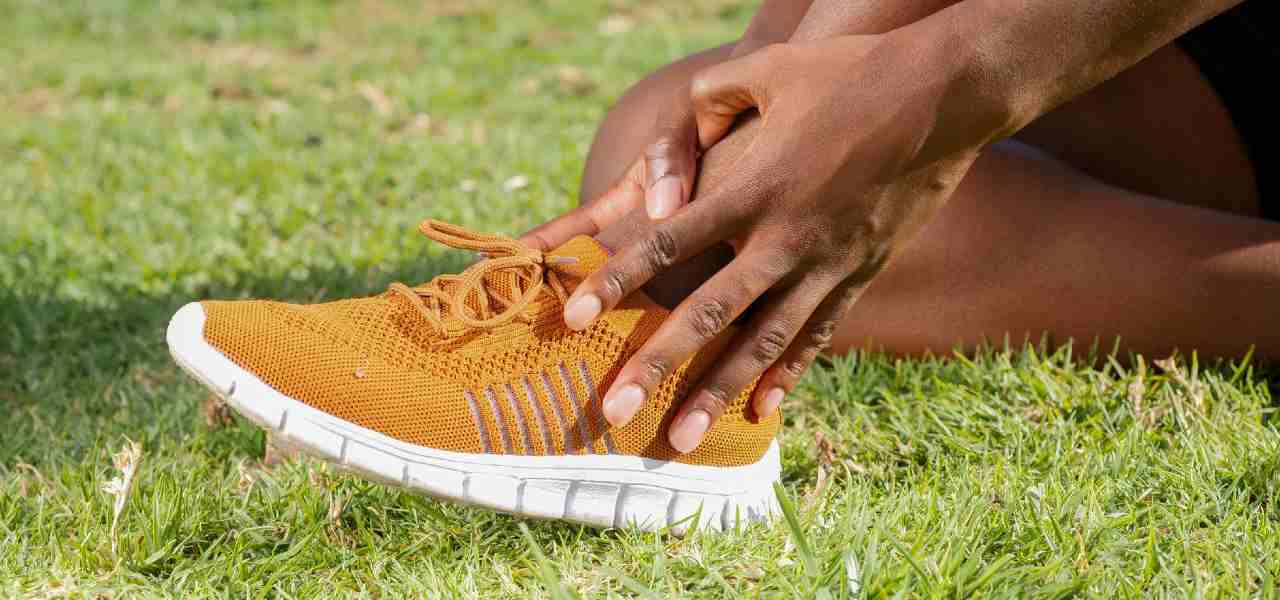Chiropractic Approach to Achilles Tendinitis

In recent years, as stated by a 2015 study, there has been an increase in cases of Achilles tendon rupture. This has been linked with increased physical activity in our society and untreated Achilles tendinitis. While its location and mechanism of pain are yet to be fully understood, chiropractic care has shown great promise in effectively treating Achilles tendinitis.
What is Achilles Tendinitis?
Achilles tendinitis is an injury caused by overuse of the Achilles tendon-the largest and strongest tendon in the body that runs along the back of your lower legs and connects the muscles of your calf to your heel.
Achilles tendinitis is mostly seen in runners who increase the mode, intensity, and duration of their runs, placing more work on the Achilles tendon. It most commonly occurs in people aged 30 -50 years and males, especially those who play sports at intervals. For example, middle-aged men who play basketball or tennis during weekends. This sudden rise in demand on the tendon causes injury and inflammation, followed by a short period of healing which is cut short by another mechanical exertion on the tendon.
This results in the breakdown of the cells of the tendon and poor healing response that can be attributed to ongoing demand on the tendon, poor blood supply, or a combination of both. Several degenerative processes then bring out the pain and other signs of inflammation associated with the condition.
Does Chiropractic Care Help Achilles Tendinitis?
There are several ways to treat Achilles tendinitis. However, chiropractic therapy has proven to be one of the best therapies available. Several studies have highlighted chiropractic therapy as an effective cure for Achilles tendinitis.
- Quickly Stops the Pain – A 2012 case study published in the Journal of Canadian Chiropractic Association reported the effectiveness of chiropractic care. It reported that midportion Achilles tendinopathy was successfully managed by interventions employed by chiropractors. It relieved pain and stiffness, improved the quality of life, and facilitated the early return to daily life activities, work, and sports.
- Relieves Pain and Stiffness – A similar study proved that ART® (Active Release Techniques) used by chiropractors in their practice is effective in relieving pain and stiffness in persons with Achilles tendinitis. ART is one of the soft tissue therapy/mobilization techniques where deep digital tension is employed to reduce pain and stiffness. It involves moving the affected tendon directly and indirectly from a position to another.
- Improves Range of Motion – In a more recent study published in the Medicine and Science in Sports and Exercise Journal, IASTM was proven to improve range of motion and decrease stiffness. The study focused on using instrument-assisted soft therapy mobilization (IASTM) over the Achilles tendon and other muscles in the posterior part of the lower legs. It was found that IASTM increased the ankle joint dorsiflexion range of motion while reducing stiffness as well.
How Does a Chiropractor treat Achilles Tendinitis?
Treatment approaches to Achilles tendinitis could be pharmacological or non-pharmacological. Chiropractic care is an effective solution where individuals do not want drug therapy and/or surgical intervention.
According to the American Chiropractic Association (ACA), the following techniques are used to treat pain in the heel and calves, a characteristic of Achilles tendinitis:
- Exercise Therapy – An exercise device could be used to treat pain in the calf and heel. The exercise device is used for concentric and eccentric loading of the inversion component of a muscle in the posterior lower leg, posterior tibialis. For better results, the focus is primarily aimed at eccentrics. This includes muscle stretching, muscle strengthening, and coordination of the ankle/foot.
Other forms of care include:
- Traction Adjustments or Mobilization – These are carried out on the hip and knee to improve range of motion and relieve tension and stiffness.
- Active Release Techniques (ART) – These techniques are used to relieve tension by removing fibrosis/adhesions which develop due to repetitive use and overload on those tissues.
- Instrument-Assisted Soft Tissue Mobilization (IASTM) – This is a technique used in physical therapy. In IASTM, the chiropractor uses specialized instruments in place of his hands to provide more direct treatment of the soft tissues involved with movement.
- Diversified Chiropractic Adjustments – These are performed as necessary on the spine and feet. Spinal manipulation is the most commonly performed adjustment where chiropractors use their knowledge of the relationship between the spine and pain in several parts of the body. In spinal manipulation, chiropractors apply controlled and quick thrust using their hands or other devices to the spine to relieve tension and stiffness, reduce swelling, and improve nerve function.
- Suction Cupping – This is targeted at relieving pain. It involves the use of multiple static cups or just one cup to create a sliding motion along the painful area. The patient’s tolerance determines the cup size, sliding location, and the amount of suction. Cocoa butter is applied over the painful area, pressure is set and applied for 10-15 seconds.
How Can I prevent Achilles Tendinitis?
The following activities can help reduce your risk of Achilles tendinitis. They include:
- Always warm-up before you exercise, train, or play sports.
- Stay in shape and remain active all year round. Perform exercises that strengthen your tendons, calves, and feet.
- Increase the intensity and duration of your exercises gradually, not suddenly
- Wear well-fitting, supportive shoes and replace them when they are worn. You may use cushioning pads in your shoes to make them comfortable and supportive.
- Avoid running on uneven areas such as a hill.
- Use appropriate equipment in exercising, training, or sports sessions.
- If you notice any signs of Achilles tendinitis, take a break and see your doctor.
